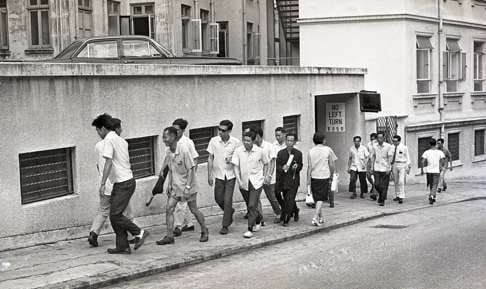
Stories behind Hong Kong street names: Ice House Street, and the Ice King of Boston
The clue is in the name of this street, and it is pretty obvious: it was the site of an ice storage facility. The story of the man who supplied the ice all the way from the US is altogether more interesting

It is not hard to imagine what inspired the name of Ice House Street in Central - there used to be a warehouse for raw ice blocks. Hong Kong did not have its first commercial ice-making factory until 1874; before that, ice was imported all the way from the United States. Ships carrying the cargo would dock near the foot of Ice House Street, where the ice blocks could easily be moved to the thatched bamboo mat sheds where they were stored.
We dug a little deeper to find out where the ice came from.
The ancient Greeks, Persians and even Chinese all harvested and stored ice during winter to help themselves get through the heat of summer. But the commercial ice industry started with one man, Frederic Tudor (aka the Ice King), who conceived the idea of cutting up the frozen ponds on his family’s estate in the American city of Boston and exporting them.
Tudor and his brother put the idea to work, and though they made huge financial losses on the first few shipments of ice, to places such as Cuba and the French Caribbean island of Martinique, they began making technical refinements: for example, insulating the ice with sawdust instead of straw and cutting the ice into large grids with a horse-drawn plough.

Tudor’s foreman Nathaniel Wyeth, an ingenious innovator, streamlined the process of harvesting the ice. Instead of having labourers carry or drag the ice, the blocks were left to float down a canal and then transported to warehouses by conveyor belt.
Then came another challenge – there wasn’t a market for ice: no one wanted to spend money on huge chunks of the stuff. The determined American went around convincing people of the uses for ice. For doctors, it could be used to cool down feverish patients; scientists could use it to preserve food. Tudor also showed restaurants and wealthy households how ice could be used to chill drinks and make ice-cream.
Though he landed in a debtors’ prison three times and nearly went broke getting his business on track, the entrepreneur who first saw the potential of ice eventually died rich. His business was booming by the mid-1830s, shipping tonnes of ice to places as far as India and, from 1843 onwards, Hong Kong.